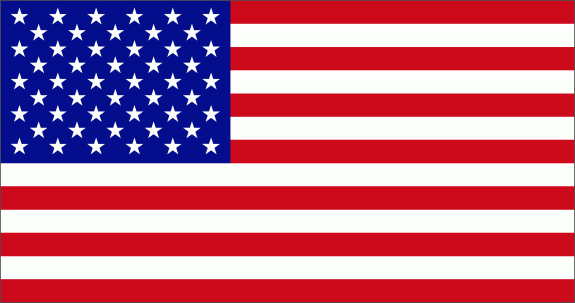Where Would You Put a 51st Star on the U.S. Flag?
If you wanted to make a 51-star American flag, or a 76-star American flag, how would you arrange the stars?
Exactly 236 years ago today the United States Congress signed the resolution that made the familiar stars and stripes the official American flag. That early flag looked quite different than the one we know today of course, with only 13 stars rather than 50. It wasn’t until August 21, 1959, when Hawaii officially joined as the 50th state of the United States of America, that we finally got those alternating rows of stars. But let’s say that the U.S. does pick up a new state—maybe one of the current unincorporated territories like Guam or American Samoa or Puerto Rico—as an official state. Where do you put that new 51st star? Sure, you could just tack it on the side. But who really wants an awkwardly asymmetric flag?
Well, one way to do it is to crowd source the design. When Puerto Rico voted for statehood, the internet was ready. Smithsonian’s Design Decoded covered the new designs:
Reddit users got started right away after Puerto Rico’s vote, and designs are popping up elsewhere across the Internet. The irregularity of the number makes for some interesting solution, probably the best one being a star-spangled Pac-Man eating star-spangled pac-dots.
But as clever as Reddit might be, there is probably a better way. From Inside Science we learn of a more elegant solution, devised by mathematician Skip Garibaldi, to organize the stars of the future United States:
Garibaldi had worked out his solution a few years ago, says Slate, and he didn’t just figure out how to make a 51-star flag. Rather, Garibaldi could make you a nice-looking flag with up to 100 stars—just in case America decides to go on an imperialistic spree.
To make a good American flag, you need your star pattern to fit in a rectangle. Then, you generally want the stars to be either horizontally or vertically symmetrical, says Slate.
With those rules in mind, the six flag patterns Garibaldi uncovered can be defined as follows:
Long: Alternating rows of even and odd numbers of stars, beginning and ending with the longer row. This is the pattern of our current 50-star flag.
Short: Like the previous pattern, but beginning and ending on the shorter row. This pattern has never been used on the American flag. Out of our six patterns, however, it’s the only one that’s viable for a hypothetical 71-star flag.
Alternate: Like the long and short patterns, but with the same number of odd and even rows, as in the 45-star flag.
Equal: Every row has the same number of stars, like the 30-star or 48-star flag.
Wyoming: The first and last rows have one more star than the interior rows. In addition to the 1890 flag, issued after Wyoming became a state, the 26-star, 32-star, and 37-star flags looked like this.
Oregon: The middle row has two fewer stars than all the other rows, as in the 33-star flag issued upon Oregon’s statehood. This only works for flags with an odd number of rows.
For a 51-star flag, all you really need, says Inside Science, is three rows of nine and three rows of eight.
More from Smithsonian.com:
Flag Day at the National Museum of American History
/https://tf-cmsv2-smithsonianmag-media.s3.amazonaws.com/accounts/headshot/smartnews-colin-schultz-240.jpg)

/https://tf-cmsv2-smithsonianmag-media.s3.amazonaws.com/accounts/headshot/smartnews-colin-schultz-240.jpg)